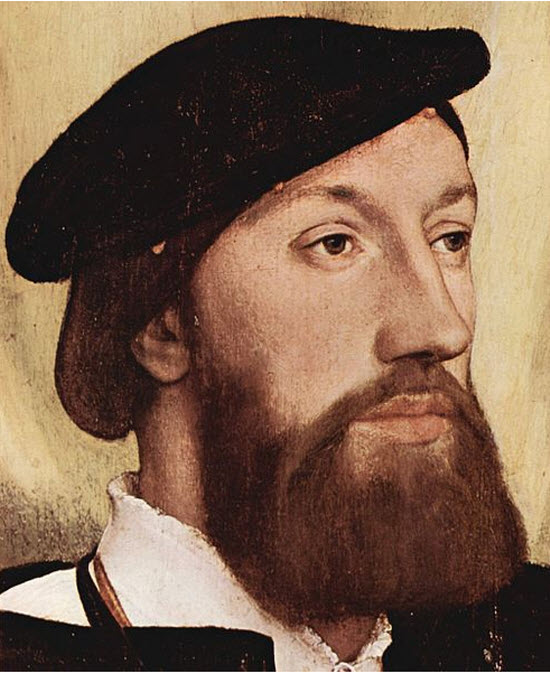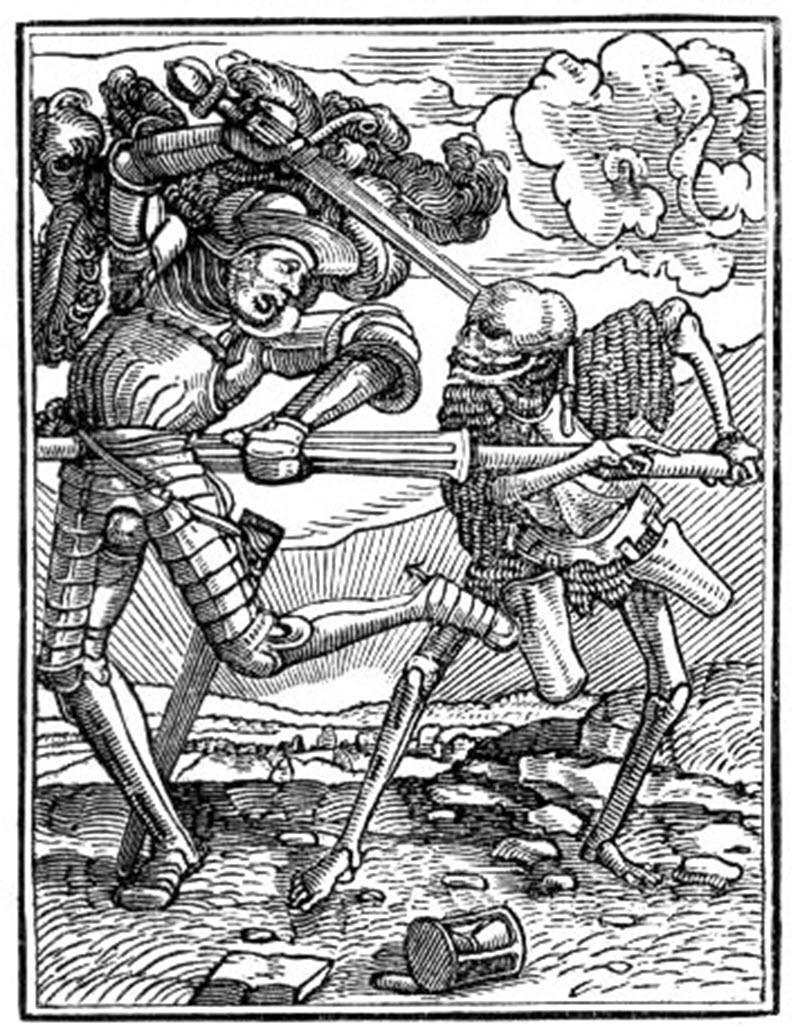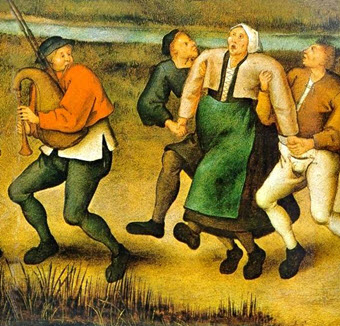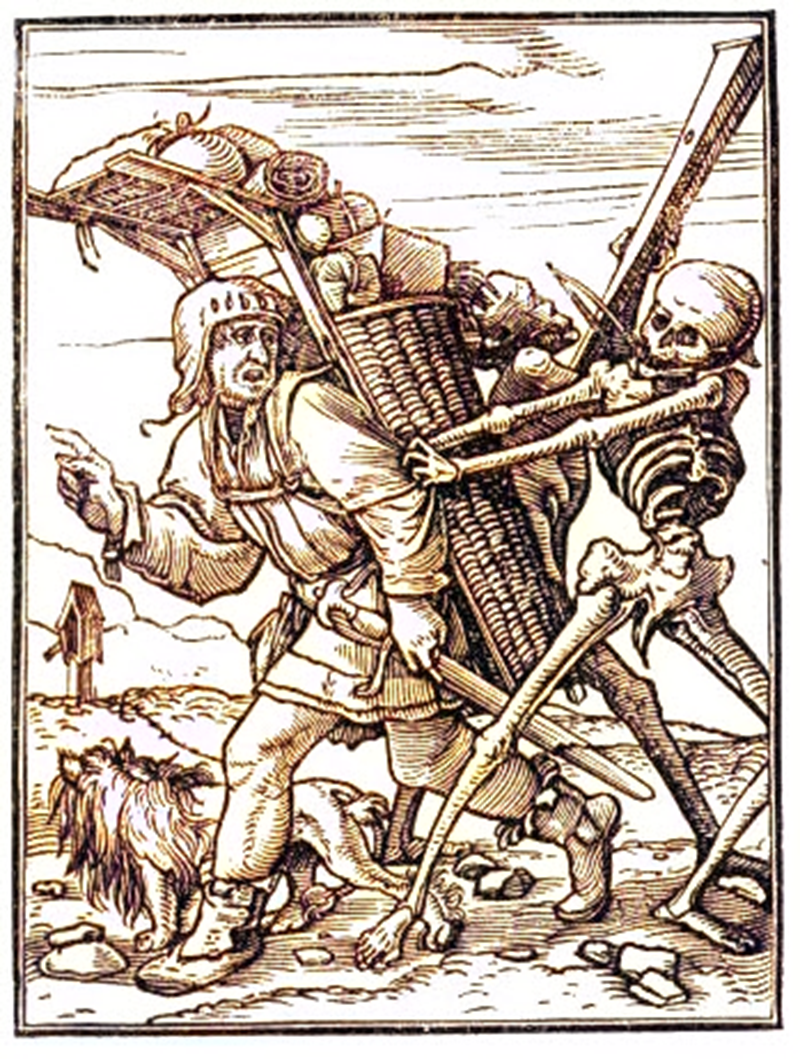Dance of Death, Dance of Macaber (ma-kâ'-bér). [F. Danse Macabre, L. Chorea Machabćorum,] Originally, a kind of morality or allegorical representation intended to remind the living of the power of death. It originated in the| 14th century in Germany, and consisted of dialogues between Death and a number of typical followers, which were acted in or near churches by the religious orders.
Soon after it was repeated in France. It became extraordinarily popular, and was treated in every possible way, in pictures, bas-reliefs, tapestry, etc. Death is made grotesque and a sort of “ horrid Harlequin,” a skeleton dancer or musician playing for dancing, leading all man-kind. A dramatic poem which grew out of this was imitated in Spain in 1400 as “ La Danza General de los Muertos.”
In 1425 the French, having illustrated each verse, had the whole series painted on the wall of the churchyard of the Monastery of the Innocents, where they acted the drama. In 1430 the poem and pictures were produced in London, and not long after at Salisbury (1460), Wortley Hall in Gloucestershire, and other places. In Germany it attained its greatest popularity.
The drama was acted until about the middle of the 15th century, when the pictures became the main point of interest. There is a picture of this kind in the Marienkirche at Lübeck, and one was on the cloister wall of Klingenthal, a convent at Basel, both of the 14th century : the latter disappeared in 1805. One in the Campo Santo at Pisa is ascribed to Orgagna. In the reign of Henry VI. a processional Dance of Death was painted around the cloisters of old St. Paul’s in London. Holbein has left flfty-three sketches for engraving, the originals of which are in St. Petersburg: these he called “Imagines Mortis”; they are, however, independent, and do not represent a dance. Lydgate wrote a metrical translation of the poem for the chapter of St. Paul’s, to be placed under the pictures in the cloister. Various explanations of the name Macaber or Macabre hâve been given.
The name “ Macabre ” probably arose from the association of this subject with a painting that illustrated a thirteenth-century legend of the lesson given by certain hideous spectres of Death to three noble youths when hunting in a forest.



